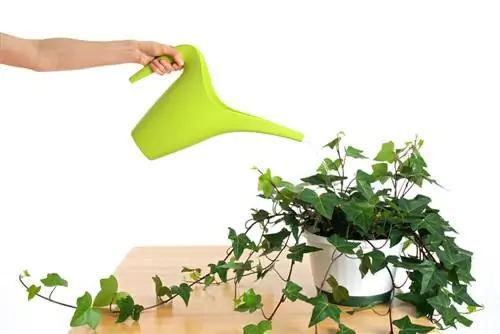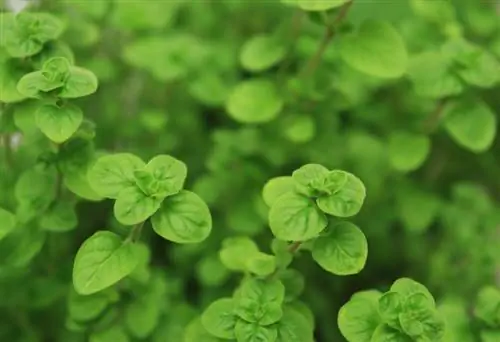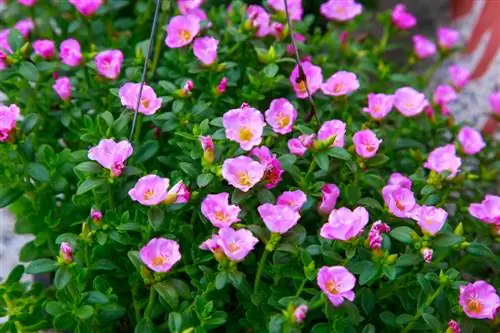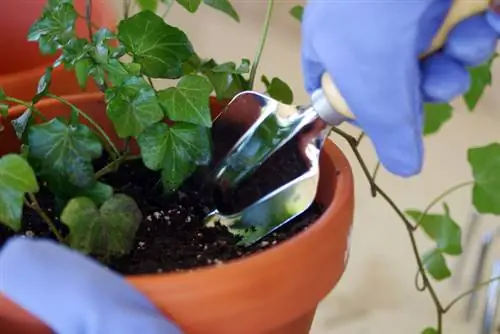- Author admin [email protected].
- Public 2023-12-16 16:46.
- Last modified 2025-01-23 11:20.
Ivy is a plant that is usually grown in the garden, but is also suitable as a houseplant. The care is not very complicated, which is why ivy is also very popular as a ground cover or climbing plant in the garden. What you need to consider when caring for ivy in the garden, on the balcony or in the room.

How do you care for ivy properly?
Ivy care includes proper watering, fertilizing, cutting and, if necessary, transplanting or moving. Avoiding waterlogging, cutting regularly and ensuring sufficient humidity are other important aspects of ivy care.
Is caring for ivy different as a houseplant?
Ivy thrives best outdoors in the garden. Nevertheless, you can easily care for it as a houseplant in the house or in a pot on the balcony.
When kept in a pot, you only need to water more frequently and fertilize occasionally.
How to water ivy correctly?
Ivy prefers slightly moist soil. The root ball must never dry out completely, but it cannot tolerate waterlogging either.
Water ivy whenever the surface of the soil has dried out a little. You can also use hard water because hard water does not harm the plant.
When keeping it in a pot, make sure that excess water can flow out through the drainage hole to avoid waterlogging.
When and how is fertilization done?
Fertilizing is unnecessary when caring for the garden. Ivy grows rapidly even without additional nutrients. If necessary, spread some compost or horn shavings around the ivy at the beginning of the year. Horn shavings or liquid fertilizer for shrubs are also suitable fertilizers. Fertilization is carried out outdoors from March to a maximum of August.
Ivy in a flower box or pot, on the other hand, should be fertilized more often. From March to September, apply liquid fertilizer every two weeks. Use less fertilizer than stated on the package.
How do you cut ivy correctly?
Ivy is cut in the garden to keep the plants under control. Otherwise, there is a risk that the ivy will overgrow everything else, including walls and fences. The best time for cutting is spring or early summer. Ivy is often cut twice a year.
In the first few years, growth is not so pronounced, so cutting the tips is sufficient. Later you should prune the ivy back more to encourage branching and to keep the plant under control better.
Even severe pruning has little effect on ivy; the plant usually recovers very quickly.
Can ivy be transplanted?
Replanting younger ivy is not worth it. Instead, you prefer to create offshoots that you implement. If you want to transplant older ivy, you must dig up the root ball as much as possible. You should first shorten the ivy tendrils.
The best time for transplanting is spring.
When should ivy be repotted?
When caring for ivy in a pot, you should repot ivy once a year, ideally in spring when the growing season begins. When doing this, completely replace the soil.
What diseases can occur?
Fungal diseases such as leaf spot and ivy canker can occur. Infected plant parts are cut off and disposed of.
What pests should you watch out for?
Pests mainly occur on houseplants when the humidity is too low. An infestation of spider mites and scale insects is reflected in the discoloration of the leaves. In the worst case, they dry out and fall off.
Spray the plant with dish soap solution or use a commercial insecticide.
To prevent this, you should increase the humidity in the room by spraying the ivy more often. Do not place the plants in direct midday sun and avoid placing them directly next to or above a heater in winter.
Why do ivy leaves change color?
If the leaves of the ivy turn yellow or brown, the plant may be too dry. Water more often, but avoid waterlogging.
Diseases or pest infestations can also be responsible for spots or brown leaves.
How is ivy overwintered?
Common ivy is absolutely hardy. Even in a pot it can tolerate low temperatures without winter protection. You should only protect freshly planted ivy from frost in the first year. Regular watering, even in winter, is more important than protection from the cold. The soil dries out particularly in very dry winters. Ivy suffers more from drought than from cold temperatures.
Some variegated ivy species are only partially hardy or not hardy at all. You should only grow these varieties in a bucket or pot. Then you can easily overwinter them indoors or provide them with winter protection made of burlap or bubble wrap.
Ivy as a houseplant is kept at consistent temperatures all year round. It is not necessary to lower the temperature in winter.
Tip
Ivy is difficult to remove from the garden once it has grown. If you want to permanently eliminate ivy, dig up all the roots. Do not leave any plant parts lying around as the shoots quickly form new roots.






